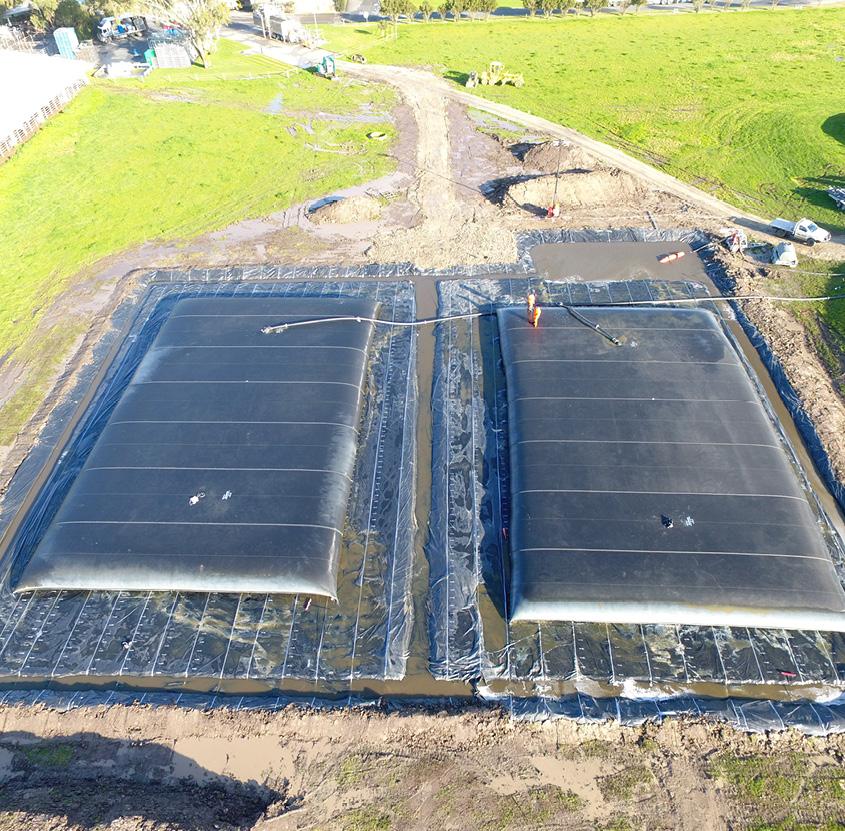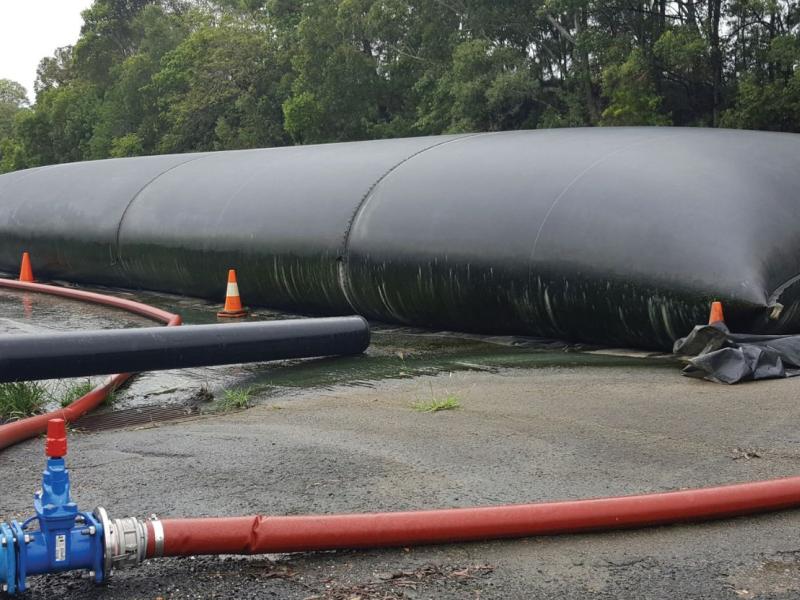
WASTEWATER POND DESLUDGING

PROJECT DESCRIPTION
A meat processing facility in regional Victoria required a solution to clean and desludge three wastewater ponds with a combined capacity of 12 millilitres. Over time, solids had settled to the pond floor, reducing capacity, while the clear water on the surface was either evaporated or reused for irrigation in compliance with EPA regulations. Without regular desludging, the ponds would eventually become full, preventing further waste from being processed.
Instead of constructing new ponds, the facility chose a more cost-effective and environmentally friendly solution by using Geotube dewatering container geotextile.
OUR SOLUTION
Dewatering biosolids presents challenges such as variability in solids, the generation of methane gas, and occasional fats and grease, all of which can affect performance. To address these, expert guidance on polymer dosing and flocculation was provided to ensure efficient dewatering and maximise solids captured.
The contractor pumped the sludge into Geotube dewatering units after mixing it with polymer, filling the units to maximum height. Flow was diverted or paused as needed to allow passive dewatering, and pumping continued until the units were full and the majority of solids had been removed.
The project took approximately four weeks, after which the units were left to dewater for one to two months until the material became spadable. Dried biosolids could then be reused on site, composted, sold, or disposed of in compliance with regulations.
Throughout the project, the Geofabrics team provided on-call support, ensuring smooth operations and timely problem-solving. Standard and custom Geotube units allowed the project to meet schedule requirements and accommodate specific site constraints.
PRODUCT USED
Geotube® dewatering container geotextile
- Made from an engineered textile that is designed for dewatering high moisture content sludge and sediment
- High flow rate allows residual materials to dewater, whilst containing solids
- Simple to use as there are no mechanical or moving parts that could breakdown or wear and tear
- Custom fabricated with seaming techniques that withstand pressure during pumping operations
- Available in many sizes, depending on volume and space requirements
- Supported by design advice and guidance on polymer use for your sludge





